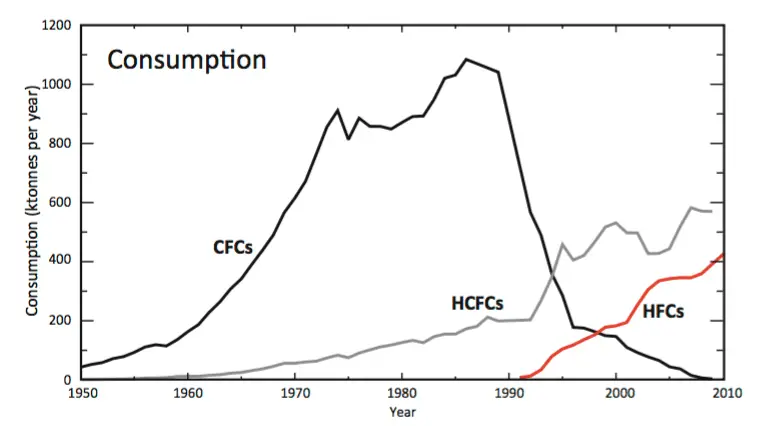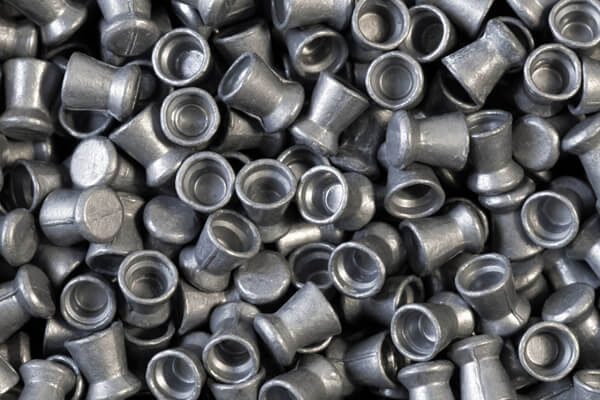
2031
The International Space Station is deorbited
The International Space Station (ISS), which first became operational in November 2000, has now reached the end of its lifespan. Originally intended to last for only 15 years, it continued to defy expectations through the late 2010s and into the 2020s. Multiple extensions of the planned time in orbit, along with additional modules and upgrades, meant that it would endure for twice the length of its earlier timeline.
By far the largest human-made object in space, the ISS was visible to the naked eye from Earth as it completed its 16 daily orbits, varying between 418 km and 422 km above the Earth’s surface. With its microgravity environment, the ISS yielded breakthroughs in medicine and biotechnology, materials science, and other areas of research. It helped to monitor Earth’s ecosystems and natural disasters in real time. It also provided testing of future spacecraft technologies and a place to study the health effects of long-term space flight – essential for enabling the future human exploration of the Solar System.
However, the ISS accumulated damage over the long term, with solar radiation and temperature extremes gradually taking their toll. The daily expansion and contraction of materials, charring of glass, repeated docking and undocking of spacecraft, all weakened the station’s integrity. High-speed collisions with space junk also posed a significant and growing threat.
A previous plan by NASA had proposed ending the ISS by 2028. But in 2022, the Biden administration extended this timeline to 2031. The ISS would be steered towards a remote part of the Pacific Ocean known as Point Nemo, a spacecraft “graveyard” and the furthest known location from civilisation.
In late 2030, the ISS is gently decelerated by onboard thrusters, causing its altitude to gradually decrease over the course of a few months. The final part of the descent is much faster and occurs in January 2031.* As it re-enters the atmosphere, the large solar arrays are the first components to burn away, followed by the upper modules and then the remaining structure below. The ISS is four times the size of Mir, which underwent a similar manoeuvre in 2001.
As of 2022, NASA had spent $3.1 billion a year on the space station program, with more than $1.3 billion going to operations of the station and research performed there, and $1.8 billion on crew and cargo transportation. The retirement of the station therefore provides major cost savings for NASA and enables the agency to focus on other areas.
By 2031, commercial space platforms are replacing the ISS as a venue for scientific research and collaboration. Another major deorbit occurs the following year when China retires Tiangong, its national space station.
DAVINCI+ lands on Venus
DAVINCI+ is a robotic spacecraft sent to investigate the atmosphere of Venus, as part of NASA’s Discovery Program. Having launched in 2029 and performed a series of flybys, it deploys a lander in 2031 – the first since NASA’s Pioneer Venus in 1978 and the USSR’s Vega in 1985.
During its 63-minute descent by parachute, this sphere-shaped probe samples the air, taking measurements of its chemical composition and other properties down to the surface. This data, 10 times more detailed than any previous mission, helps in understanding the atmosphere’s origin, how it has evolved over time, and how and why it is different from those of Earth and Mars. It determines the history of water on Venus, such as the presence of oceans in the past, as well as previously unknown processes at work in the lower atmosphere.
Before it reaches the surface, the DAVINCI+ probe takes the first ever high-resolution photos of the planet’s intriguing, ridged terrain (“tesserae”) to explore its origin alongside tectonic, volcanic and weathering history. This camera, the Venus Descent Imager (VenDI), is similar to the Mars Descent Imager (MarDI) and reveals the surface of Venus in stunning, never-before-seen detail.
The probe’s other instruments include two spectrometers to obtain the first detailed in situ surveys of noble and trace gases and associated isotope ratios, alongside an “atmospheric structure investigation” to measure the dynamics of the Venusian atmosphere during entry and descent.
All of these findings help scientists understand why Venus and Earth took such different paths as they matured, providing another point of comparison for studies of rocky exoplanets. A sister mission, VERITAS, is also taking place at Venus during this time, with a focus on mapping and geology.
Credit: NASA
India has begun phasing out hydrofluorocarbons (HFCs)
The Montreal Protocol, signed in 1987, was an international agreement to protect the ozone layer by phasing out the production of substances responsible for ozone depletion. These included chlorofluorocarbons (CFCs) and hydrochlorofluorocarbons (HCFCs).
CFCs and HCFCs had been used in a wide range of industrial applications – such as aerospace, agriculture, air conditioning, electronics, fire protection, flexible and rigid foam, laboratory measurements and refrigeration. Produced mostly in developed countries, hydrofluorocarbons (HFCs) began to replace CFCs and HCFCs. HFCs posed no harm to the ozone layer because, unlike CFCs and HCFCs, they did not contain chlorine. They were, however, greenhouse gases, with a very high global warming potential (GWP), thousands of times greater than carbon dioxide (CO2) when measured on a per-molecule basis. While their atmospheric concentration was initially very low, it began to grow rapidly in the years following the Montreal Protocol.

Credit: UNEP
Known as “super greenhouse gases,” it was feared that soaring use of HFCs, combined with their high global warming potential, could undercut the benefits expected from the reduction of other greenhouse gases such as carbon dioxide and methane. If left unchecked, it was calculated that HFCs could add a potentially disastrous 0.5°C to global average temperatures by the end of the 21st century.*
Unlike other greenhouse gases in the 2015 Paris Agreement, HFCs had other international negotiations. In September 2016, the New York Declaration urged a global reduction in the use of HFCs. In October 2016, negotiators from 170 nations meeting at the summit of the UN Environment Programme in Kigali, Rwanda, reached a legally-binding accord to phase out hydrofluorocarbons (HFCs) in an amendment to the original Montreal Protocol.*
While hailed as a major achievement for international diplomacy, there were significant differences on the timing and schedule of reductions. The final agreement would see the richest countries starting the process in 2019. Over 100 developing nations would follow in 2024. However, a small group of countries argued for and secured a later start, insisting their economies needed time to grow. Among this group was India, the world’s third largest emitter of greenhouse gases and a region with surging demand for air conditioning, due to both rising incomes and increasingly extreme hot weather.
The chemicals needed to replace HFCs were more flammable and toxic – requiring better-trained and better-paid people to design, install and maintain equipment such as air conditioners safely and correctly. In addition, new technologies were required to capture and store HFC in some applications. India’s Council on Energy, Environment and Water estimated that the total cost of phasing out HFCs in all homes, workplaces and vehicles could reach up to $38 billion.
India, along with Pakistan and a number of Gulf states, agreed to “freeze” their use of HFCs by 2028. This plateau would be followed by steep reductions from 2031 onwards,* leading to the vast majority of HFCs being eliminated by the late 2040s.*

Much of Bangkok is being abandoned due to flooding
Bangkok, with a population of over 12 million, has been sinking underwater for decades. By the early 2030s, it is facing a disaster of epic scale, with much of the city being abandoned.*
This has occurred for various different reasons. First and foremost, the city is built on clay. When originally settled, the region was just swampy coastline, but today it is covered by skyscrapers, highways and urban development. The enormous weight of all this concrete and steel has been pushing down on the soft clay beneath, causing the soils to descend by up to 5.3cm per year. By 2010, part of the megalopolis was already under sea level, a trend that would only become worse in the following decades.
The illegal tapping of groundwater has been another major factor. Many of the city’s residents have been continuously pumping up groundwater – both for their own use and to sell as a commodity – removing a natural layer and resulting in further destabilisation of the soil.
Rising sea levels due to global warming have been yet another factor, eroding the coastline at a rate of 4cm a year, while the increasing severity of monsoon rains has led to longer and more devastating floods.
The explosive growth of Bangkok in recent decades (making it one of the fastest growing places in southeast Asia) has dealt a serious blow to the city’s infrastructure. Areas of land that had in the early 20th century been used to absorb flood waters had vast suburbs and business districts built over them. Canals were filled in to make way for the rapid urbanisation of the Chao Praya River Delta. The weight of the city grew and grew, to the point where the soft soil it was built upon could simply no longer support it.
By the early 2030s, large portions of the megalopolis are well below sea level. The government’s response during this time has proven inadequate, a lack of clear policy doing little to help the overall situation,* while sea walls have been almost useless due to increasing erosion of the shore. The lowering of the city, combined with rising sea levels (over 20cm higher than in 2000), has resulted in whole districts of Bangkok being permanently abandoned. Over a million buildings, the majority residential, are rendered uninhabitable, forcing their occupants to move further inland.
Many areas which have yet to be fully claimed by the sea have also been evacuated, as the regularity of flooding proved too costly for many. Shantytowns and refugee camps are forming outside the city, while the government struggles to adjust as the capital sinks. Thailand as a whole is going through a period of almost unimaginable stress at this time, a result of such huge population displacement. The political, economic and social upheaval in the region is having a significant impact on global GDP.
Efforts are underway to save Bangkok’s numerous historical monuments and artifacts, with some temples being moved inland and reconstructed in their entirety. Due to the scale of this disaster, however, much is lost.
In the coming years, the situation for Bangkok will only worsen as more and more of the city is permanently flooded. By the end of this century, the entire city will be abandoned.*

Global reserves of lead are running out
Lead is a carbon group element with high density, malleability, softness and ductility. Metallic lead is relatively rare in the Earth’s crust, and so is usually processed from zinc, silver and copper ores. Like silver, lead has been in use by humans for thousands of years. It was widely exploited by the Roman empire and played a large role in the industrial revolution. World production doubled from 1850 to 1900, doubled again from 1900 to 1950, then doubled yet again from 1950 to 2000.*
Due to its high density, it has often been used as a weight or ballast, as well as radiation shielding. It is also used in firearms and other weaponry. The bulk of lead is used in producing car batteries and similar, as well as in electrodes and high voltage wires. The primary producers are China, Australia, the United States, Canada and Kazakhstan.
Lead is also a pollutant and can be hazardous to human health, being infamous for its older uses in paint and fuels. From the 18th to 21st centuries, environmental levels of lead increased more than 1,000-fold.* In terms of numbers of people exposed and the public health impact, it became one of the largest environmental medicine problems. Although regulations from the 1970s began to reduce the lead content in products and greatly cut exposure in the developed world, many developing countries still allowed its use.
By the early 2030s, most reserves of lead are beginning to be exhausted.** Much of the recent increase in demand has come from China’s growing automobile sector. Because about half of the supply comes from recycled scrap, improved recycling programs are able to carry demand in the short term. Fortunately, lead has ready alternatives for most of its uses including zinc, copper, iron and tungsten. However, some of these metals will soon be facing their own shortages too, necessitating the production of artificial replacements. Because of this, the 2030s sees an acceleration of global recycling efforts in order to avert a resource crunch.

Perennial wheat and corn are becoming profitable
In traditional agriculture, all major grain crops have been “annuals”, or short-lived perennials grown as annuals – surviving for just one growing season. They die off once harvested, and then a brand new crop must be planted to take their place. This requires vast amounts of fuel, fertilizer, herbicides and pesticides – causing soil erosion, acidification and disrupting both the nitrogen and carbon cycles.
Between 1600 and 2000 AD, the United States lost around one-third of its topsoil. Worldwide, soil erosion was putting the livelihoods of nearly a billion people at risk by the early 21st century.* More than a quarter of Earth’s land surface had been converted for agricultural use, with more land converted since 1950 than in the previous 150 years. This situation was being exacerbated by rapid population growth,* demand for meat products in emerging economies, increased production of biofuels,* along with climate change and peak phosphorus* looming on the horizon.
Genetic engineering had emerged as an important tool in crop management. Among the more notable advances occurred in 2017, when BioCassava Plus received regulatory approval, giving a huge boost to farming in Africa.* By the early 2030s,** this has been followed by an even greater breakthrough – perennial wheat and corn – becoming profitable after many years of development.
Perennial grain crops provide a revolution in agriculture. By growing continuously for two or more years, they are far more efficient than traditional annual crops, requiring less fuel, fertilizer, herbicides and pesticides. They can store more carbon, maintain better soil quality and water content, and manage nutrients better, thanks to their deeper root systems.
The deciphering of bread wheat’s genetic code in the early 2010s* helped in paving the way towards a new generation of perennial crops. The rate of increase in wheat yields, having been in decline since 1980, is now beginning to increase again. However, agriculture will face a new set of challenges later this decade as the effects of climate change begin to accelerate markedly.*

Web
4.0 is transforming the Internet landscape
Further
convergence of the online and physical worlds has led to the emergence
of “Web 4.0” – the next generation of internet. Semantic analysing
programs, having evolved into stronger AI, now perform a huge range
of automated tasks for business, government and consumers. Running on
massively parallel networks, these applications hunt for textual and
visual data – combining the most subtle capabilities of humans (such
as pattern recognition) with ways in which machines are already vastly
superior (such as speed and memory).*
In addition
to serving as highly advanced search engines, they are playing a major
function in the real world – gathering information from the array of
sensors, cameras and other tracking devices now present in the environment,
on vehicles, and even on people themselves.
Although
privacy and civil liberties issues are being raised, this new generation
of IT promises to bring enormous benefits to society. Crimes are faster
and easier to solve thanks to these intelligent virtual agents; transport
and logistics are smoother and more efficient; resources can be managed
and distributed more accurately.
In addition,
practically every physical document in existence has now been digitally
encoded, backed up and archived online. This includes full copies of
all books, journals, manuscripts and other literature ever published
– forming a complete repository of human knowledge going back
thousands of years. These documents can be retrieved and analysed using
real-time speech commands, translated from any of the world’s 6,000
languages and accessed via 3D holographic imaging.
Web 4.0
is also democratising the Internet more than ever before. News agencies
are finding themselves increasingly outmoded by bloggers and other social
media when it comes to speed and accuracy of information.

Stem
cell pharmacies are commonplace
Stem cell
pharmacies are now a fairly common experience in the developed world, offering walk-in
diagnosis, stem-cell collection and banking services for use in future
medical crises. Affordable, personalised and targeted treatments are becoming available
for regenerating various body parts and organs.*
Married
couples are a minority in the UK
By now,
marriage in the UK has been reduced to a lifestyle choice
enjoyed by a minority, rather than an essential institution of society.
The married population
has shrunk from almost 50% of adults in 2009, to just 41% now.* This trend began in the 1980s. Increasing
pressures of work and money, together with the general stresses of the
outside world (geopolitical, social and economic), are putting
ever-greater strain on couples. The decline of religious institutions
has also played a part. Unmarried partnerships no longer carry
the stigma they once had.
In addition,
increasing numbers of people either working at home alone, or living
with their parents, are making it difficult for some to meet potential
partners. Another
contributory factor is an explosion in the use of virtual reality and other technologies leading to increased
isolation of the individual. People of all ages spend increasingly large amounts of their
time engaged in highly immersive online experiences, requiring little
or no interaction with the outside world.
Of those
who are married, the number of children per couple has declined – and not just in the UK, but other Western societies too. Combined with increasing numbers of Muslim immigrants
(who have higher numbers of children), this is significantly
altering the demographic balance.

Chocolate
has become a rare luxury
By now,
chocolate has become as rare and expensive as caviar, with even a single
bar costing $10-15.
Drought,
soil depletion and diminishing harvests in Africa – where two-thirds
of the world’s cocoa is produced – have led to soaring prices. Cocoa
is also competing for agricultural space with other commodities like
palm oil, which is increasingly in demand for biofuels.
Poor pay
and working conditions have also been a factor. Many young farmers are
now abandoning their lands and heading to the cities, in search of better
and more highly-paid jobs.*

